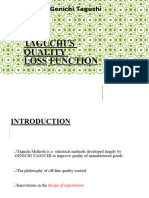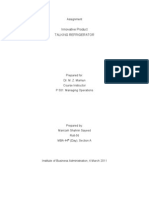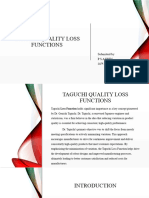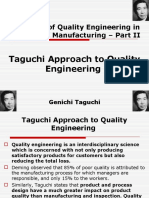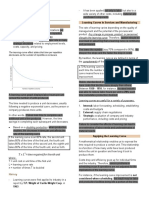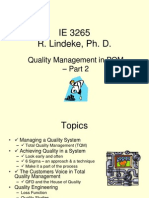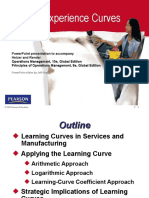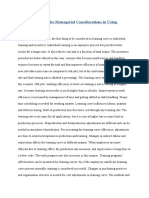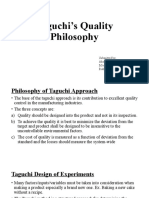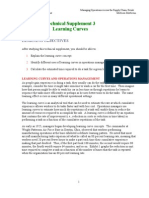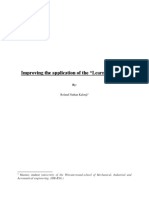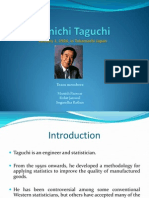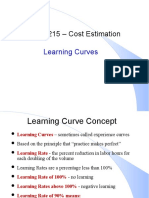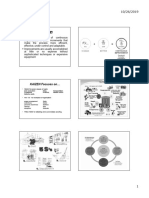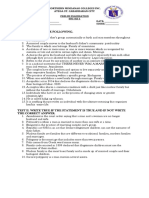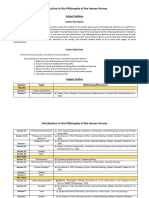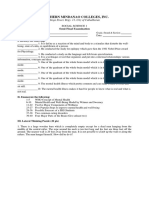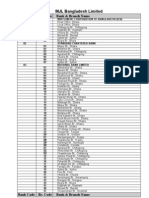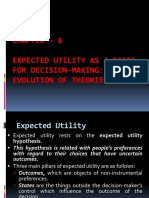0% found this document useful (0 votes)
49 views23 pagesTotal Quality Management - Class Activity: Prepared By: Bhakti Joshi Date: January 16, 2013
The document describes a classroom activity on Total Quality Management and Taguchi Loss Function. It involves 10 groups of 3 students each performing a production task where they shoot 10 times to hit a quality target of 10. Their performance is recorded and analyzed using Taguchi Loss Function to calculate loss based on deviations from the mean. It also provides examples to explain learning curve concept where the cost or time taken to produce units decreases with increasing experience according to the learning factor.
Uploaded by
Amadh PereyraCopyright
© © All Rights Reserved
We take content rights seriously. If you suspect this is your content, claim it here.
Available Formats
Download as PPTX, PDF, TXT or read online on Scribd
0% found this document useful (0 votes)
49 views23 pagesTotal Quality Management - Class Activity: Prepared By: Bhakti Joshi Date: January 16, 2013
The document describes a classroom activity on Total Quality Management and Taguchi Loss Function. It involves 10 groups of 3 students each performing a production task where they shoot 10 times to hit a quality target of 10. Their performance is recorded and analyzed using Taguchi Loss Function to calculate loss based on deviations from the mean. It also provides examples to explain learning curve concept where the cost or time taken to produce units decreases with increasing experience according to the learning factor.
Uploaded by
Amadh PereyraCopyright
© © All Rights Reserved
We take content rights seriously. If you suspect this is your content, claim it here.
Available Formats
Download as PPTX, PDF, TXT or read online on Scribd
/ 23
